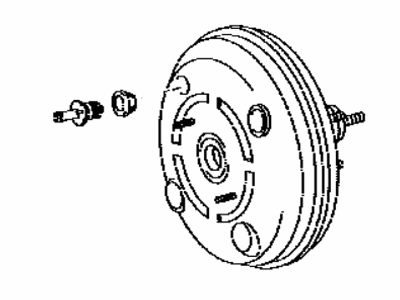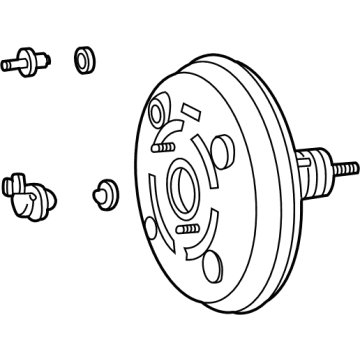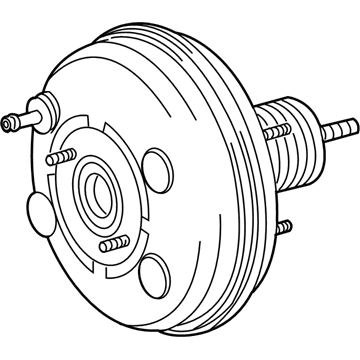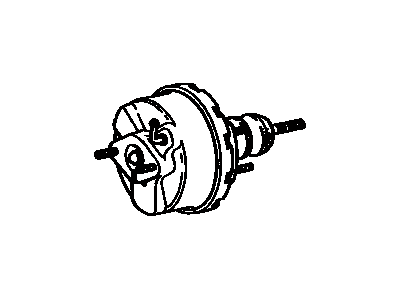

My Garage
My Account
Cart
Genuine Toyota Highlander Brake Booster
Brake Power Booster- Select Vehicle by Model
- Select Vehicle by VIN
Select Vehicle by Model
orMake
Model
Year
Select Vehicle by VIN
For the most accurate results, select vehicle by your VIN (Vehicle Identification Number).
18 Brake Boosters found
Toyota Highlander Brake Booster Assembly
Part Number: 44610-0E080$593.64 MSRP: $886.39You Save: $292.75 (34%)Ships in 1-3 Business DaysToyota Highlander Brake Booster Assembly
Part Number: 44610-0E160$645.44 MSRP: $963.73You Save: $318.29 (34%)Ships in 1-3 Business DaysToyota Highlander Brake Booster Assembly
Part Number: 44610-48291$683.98 MSRP: $1021.28You Save: $337.30 (34%)Ships in 1-3 Business DaysToyota Highlander BOOSTER ASSY, BRAKE
Part Number: 44610-0E191$595.31 MSRP: $888.88You Save: $293.57 (34%)Ships in 1-2 Business DaysToyota Highlander Brake Booster Assembly
Part Number: 44610-0E070$679.75 MSRP: $1014.96You Save: $335.21 (34%)Ships in 1-3 Business DaysToyota Highlander Brake Booster Assembly
Part Number: 44610-0E100$657.69 MSRP: $982.03You Save: $324.34 (34%)Ships in 1-3 Business DaysToyota Highlander Brake Booster Assembly
Part Number: 44610-0E150$586.62 MSRP: $875.91You Save: $289.29 (34%)Ships in 1-3 Business DaysToyota Highlander Booster Assy, Brake
Part Number: 44610-0E190$637.42 MSRP: $951.76You Save: $314.34 (34%)Ships in 1-3 Business DaysToyota Highlander Brake Booster Assembly
Part Number: 44610-0E060$642.10 MSRP: $958.74You Save: $316.64 (34%)Ships in 1-3 Business DaysToyota Highlander Brake Booster Assembly
Part Number: 44610-48110$662.86 MSRP: $989.74You Save: $326.88 (34%)Ships in 1-3 Business DaysToyota Highlander Brake Booster Assembly
Part Number: 44610-48141$662.86 MSRP: $989.74You Save: $326.88 (34%)Ships in 1-3 Business DaysToyota Highlander Brake Booster Assembly
Part Number: 44610-48142$637.19 MSRP: $951.41You Save: $314.22 (34%)Ships in 1-3 Business DaysToyota Highlander Brake Booster Assembly
Part Number: 44610-48270$803.07 MSRP: $1199.09You Save: $396.02 (34%)Ships in 1-3 Business DaysToyota Highlander Booster Assy, Brake
Part Number: 44610-0E200$587.36 MSRP: $877.00You Save: $289.64 (34%)Ships in 1-3 Business DaysToyota Highlander Brake Booster Assembly
Part Number: 44610-48290$683.98 MSRP: $1021.28You Save: $337.30 (34%)Ships in 1-3 Business DaysToyota Highlander Brake Booster Assembly
Part Number: 44610-48361$727.88 MSRP: $1086.82You Save: $358.94 (34%)Ships in 1-3 Business Days
Toyota Highlander Brake Booster
If you are in demand for superior quality and affordable OEM Toyota Highlander Brake Booster, then shop with us! We own a wide range of the reduced-priced genuine Toyota Highlander Brake Booster. You can purchase in confidence as all parts come with a manufacturer's warranty. Any issues with our products? No need to worry as we have a hassle-free return policy to guide you every step of the way.
Toyota Highlander Brake Booster Parts Questions & Experts Answers
- Q: How to remove and install Brake Booster on Toyota Highlander?A:One way to carry out a brake system operating check is to press the brake pedal for several times when the engine is off and observe whether there is any change in the pedal reserve distance. After that, push down on the pedal and start up the engine; this will be called normal operation if it goes slightly downwards. For an air tightness test, switch on your cars' engine and shut it down after approximately one or two minutes. Slowly depress the brake pedal a few times, if each depression leads to lesser travel of the pedal, then this means that the brake booster has an air-tightness. To further confirm air tightness, let's push our foot on brake and turn off the engine using a foot on a brake pedal. If there is no variation in pedal reserve travel even after holding it for 30 seconds, then you can be sure that your power brakes are properly sealed. Don't take apart any Power Brake Booster units since they require special tools together with professional skills from those who do so. When removing power brake booster apply specific procedures based on make and model of your vehicle because some models may require disconnection or removal of additional components such as cowl tray, air filter housing and brake lines. While installing a new Power Brake Booster ensure proper clearance of pushrod adjustment where necessary. After installation check and set Brake Pedal Height, Free Play and System Bleeding as required by standard.
Related Toyota Highlander Parts
Browse by Year
2024 Brake Booster 2023 Brake Booster 2022 Brake Booster 2021 Brake Booster 2020 Brake Booster 2019 Brake Booster 2018 Brake Booster 2017 Brake Booster 2016 Brake Booster 2015 Brake Booster 2014 Brake Booster 2013 Brake Booster 2012 Brake Booster 2011 Brake Booster 2010 Brake Booster 2009 Brake Booster 2008 Brake Booster 2007 Brake Booster 2006 Brake Booster 2005 Brake Booster 2004 Brake Booster 2003 Brake Booster 2002 Brake Booster 2001 Brake Booster















